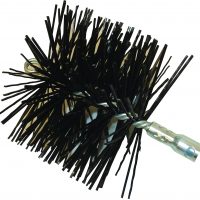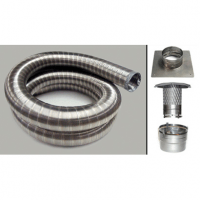The Ultimate Gas Furnace Troubleshooting Guide will answer all of your questions, including how to turn on a furnace, how to change a furnace filter, how to test a furnace’s airflow, what to do if a furnace doesn’t ignite, and much more.
We hope you find this guide to be useful – and we hope you stay warm this winter!
A) How to Turn On Your Gas Furnace
It sounds easy, but believe it or not, many people don’t know how to turn their furnace on or off. Here’s a simple, step-by-step breakdown:
* Find the breaker for your furnace. It’s part of the electrical panel, which is usually located in your basement, utility room or garage. The breaker should be clearly labeled with a gas furnace sticker. Turn the breaker to the “On” position.
* Locate and turn on the furnace switch. It is typically somewhere near the bottom of your basement stairs – sometimes in the ceiling, sometimes in the furnace room itself, and usually at eye level or slightly higher.
* Set your thermostat. Check that the furnace is on and then make sure that the selector switch is set to “Heat”. Finally, adjust your set point temperature, and that’s it – your furnace is turned and ready to heat your home!
B) How to Check and Change Your Furnace Filter
Proper maintenance of your furnace filter can help optimize airflow from your furnace, which will keep it running efficiently and economically during the coldest months of the year. To prevent burnout of your furnace parts, we recommend inspecting your filter monthly and changing it every three to six months. Here’s how it’s done:
* Begin by carefully opening the furnace’s external rack or panel door.
* Remove the furnace filter by sliding it out. Take a look at the filter to see if there’s any darkness or discoloration.
* If you can’t see through the filter, it’s definitely time for a new one. Slide the new filter into the furnace, making sure that it is installed in the direction of the airflow. And that’s it – you’re done!
C) How to Test Your Furnace’s Airflow
If a room in your house is too cold during the winter, it might be because your furnace isn’t supplying enough warm air through the registers in that particular room. There’s a simple way to test the airflow from your furnace registers to make sure they are working properly — the garbage bag airflow test.
The test is a quick way to estimate airflow by determining how long it takes to fill a common plastic garbage bag. While it is not a precise measurement, it is better than no measurement at all and will give you a good ideas as to whether you need to call a technician to look at your duct work.
To do the garbage bag airflow test:
* Tape the mouth of the garbage bag to a coat hanger or piece of cardboard to keep it open.
* Crush the bag flat and place it over the register or exhaust hood.
* Count the number of seconds it takes for the bag to fully inflate.
If the inflation time is:
* 2 seconds = 37 L/s (75 cfm)
* 4 seconds = 20 L/s (40 cfm)
* 10 seconds = 10 L/s (20 cfm)
If the measured airflow is less than 10 L/s, the furnace is delivering only a small amount of heat to a room and needs to be further inspected to determine why the heat is not going through.
The garbage bag airflow test is also useful if you have changed your heating or cooling systems or have made major renovations to your house.
D) If Your Gas Furnace Fails to Ignite
If you can hear that your furnace is on and the fan is running, but all you’re getting is cold air, you likely have ignition failure. Try resetting your furnace by turning the switch to off for at least ten seconds, then, turning it on again. If that doesn’t do the trick, give your HVAC contractor a call.
E) Furnace Troubleshooting Checklist
Think your gas furnace has quit? You could save yourself the cost of a no-heat service call by checking the following:
* Is the furnace switch in the on position? It may have been turned off by mistake.
* Is the thermostat properly set to the “heat” position and the temperature set to your normal heat setting?
* Is the furnace venting blocked by snow or ice? If so, try to remove the blockage.
* Are the programmable thermostat batteries fresh?
* Is the circuit breaker in the electric panel in the proper position?
* Is the furnace door properly closed?
* Has the filter been changed recently? If you’ve checked everything on the list and your furnace still isn’t working, give your local HVAC contractor a call, and they’ll get your furnace back up and running as soon as possible.
F) How to Properly Remove Vent Blockages
If you become aware of a furnace problem that might involve the exterior vent, do a quick inspection and see if any snow, ice or some common household item might be blocking the vent. If so, before removing the obstruction, head inside first and turn the off the power to your furnace. Now, you can safely clear away whatever is blocking your exterior vent. Once you’re done, turn your furnace back on using either the breaker or the switch.
A lack of airflow through the furnace’s interior vents could mean your furnace fan motor has seized. If this has happened, don’t try to fix the problem yourself – contact the expert furnace repair technicians at your local HVAC contractor.
G) How to Stop Air Leaks and Prevent Heat Loss
Air leaks account for a significant amount of a home’s heat loss in winter – resulting in increased heating costs as your furnace constantly tries to replace the warm air that has escaped from your home. Fixing these leaks will save you money on your heating bills.
To stop leaks around windows and doors:
* Remove the trims carefully.
* Fill large cracks or gaps with foam backer rod, oakum, or expanding polyurethane foam.
* Replace the trims and caulk along the edges.
To stop leaks along baseboards:
* Caulk along the seams without removing the baseboard.
* Remove the baseboard and caulk between the wall and the floor.
To stop leaks around electrical outlets on outside walls:
* Turn off power to the outlet and remove the outlet cover.
* Install a foam insulating pad.
* Replace the outlet cover turn the power back on to the outlet.
To stop leaks in an unfinished basement:
* Caulk under the basement sill plate and around the joists with a rubber-based caulking or acoustical sealant.
* Caulk any gaps where ducts enter a wall or ceiling.
* Insulate ducts with preformed wraps or duct-taped insulation batts.
To stop leaks in your attic:
* Seal any cracks.
* Weather strip your attic door and close it tightly.
H) If a Gas Smell is Detected
In the unlikely event that you smell something like a rotten egg smell, you could have a gas leak. Don’t turn on any electrical switches and open all of your windows. Then, go to a neighbour’s house and contact your HVAC contractor or your local gas provider immediately.






